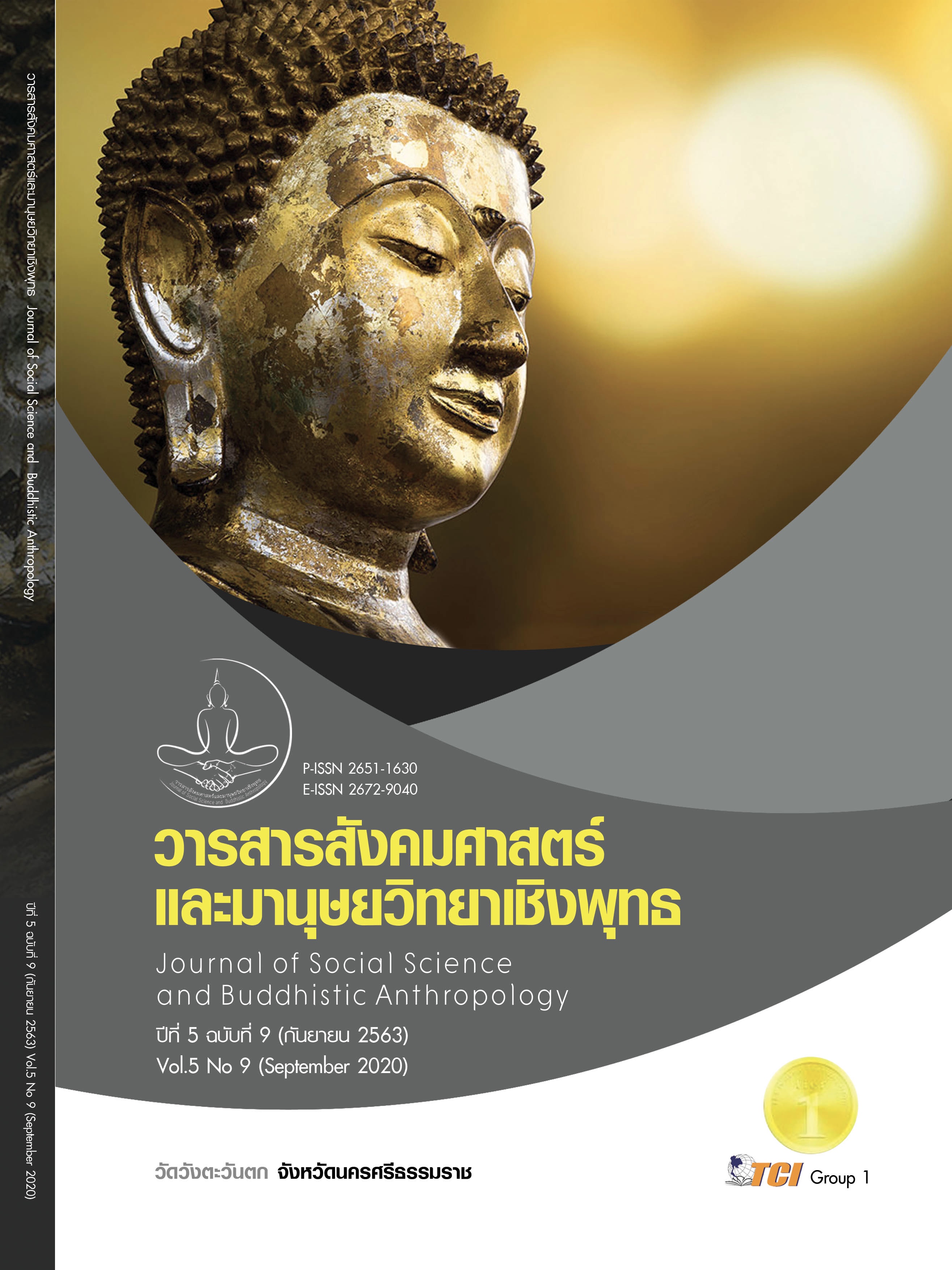THE DEVELOPMENT OF COMPUTER GAME-BASED INSTRUCTIONAL MODEL USING SIMULATION AND PROBLEM SOLVING PROCESS TO ENHANCE CRITICAL THINKING OF GRADE 6 STUDENTS
Keywords:
Instructional model, Computer Game, Simulation Learning, Problem Solving Process, Critical ThinkingAbstract
The objective of this research paper is to 1) develop the computer game - based instructional model using simulation learning and problem solving process to enhance critical thinking; 2) make a computer game; 3) study the outcome of using the computer game-based instructional model; 4) have the computer game-based instructional model certified by experts. The samples were 154 students who studied in grade 6 at Wattananusas School, Phanat Nikhom, Chonburi in the first semester of 2020 by using simple random sampling. Instruments were suitability assessment form for the draft of the computer game-based instructional model to be completed by experts, quality assessment form for the computer game and instruction manual, the computer game, critical thinking test, students’ opinion survey and the computer game - based instructional model certification form for expert. The data analysis used mean, standard deviation and t-test. The findings of the research showed that 1) The computer game-based instructional model consisted of 6 components, namely the characteristics of the computer game that uses simulation learning and the problem-solving process, the learning through simulation, the problem-solving process, the learners’ role, the instructors’ role and the technology that supports learning. The three phases of the computer game-based instructional model were the analysis and design phase, the process phase and the evaluation phase. 2) The computer game featured simulation and activities that allowed students to practice problem solving. Expert evaluation showed that its quality was at the highest level. 3) After using the computer game-based instructional model, the students’ critical thinking improved significantly at .05 level and students thought the computer game was highly levels In terms of design, activities, and content. Finally, 4) the computer game-based instructional model (CGSP Model) was certified by experts with the highest level of suitability ( = 4.80)
References
แจ่มจันทร์ ศรีอรุณรัศมี. (2554). พัฒนารูปแบบการเรียนโดยใช้ทัศนศึกษาเสมือนด้วยกระบวนการเรียนรู้แบบสืบสอบและการคิดอย่างมีวิจารณญาณเพื่อเสริมสร้างผลการเรียนรู้ทางวิทยาศาสตร์ของนักเรียนมัธยมศึกษาตอนต้น. ใน ดุษฎีนิพนธ์ครุศาสตรดุษฎีบัณฑิต สาขาเทคโนโลยีและสื่อสารการศึกษา. จุฬาลงกรณ์มหาวิทยาลัย.
ชนินทร ดวงวิไล. (2562). การจัดการเรียนรู้โดยใช้รูปแบบปัญหาเป็นฐานร่วมกับการจำลองสถานการณ์เพื่อพัฒนาผลสัมฤทธิ์ทางการเรียนและการคิดอย่างมีวิจารณญาณ ของนักเรียนชั้นมัธยมศึกษาปีที่ 3. ใน วิทยานิพนธ์ครุศาสตรมหาบัณฑิต สาขาวิทยาศาสตรศึกษา. มหาวิทยาลัยราชภัฏมหาสารคาม.
ดารารัตน์ มากมีทรัพย์. (2553). การศึกษาผลการคิดอย่างมีวิจารณญาณและผลสัมฤทธิ์ทางการเรียนด้วยการเรียนแบบผสมผสานโดยใช้กระบวนการแก้ปัญหา วิชาการเลือกและการใช้สื่อการเรียนการสอนของนักศึกษาระดับปริญญาตรี. ใน วิทยานิพนธ์ศึกษาศาสตรมหาบัณฑิต สาขาวิชาเทคโนโลยีการศึกษา. มหาวิทยาลัยศิลปากร.
ทิศนา เขมมณี. (2545). 14 วิธีสอนสำหรับครูมืออาชีพ. กรุงเทพมหานคร: จุฬาลงกรณ์มหาวิทยาลัย.
ปราชญ์ จักรไชย. (2552). การอ่านสีค่าตัวต้านทาน. ใน วิทยานิพนธ์ครุศาสตรมหาบัณฑิต สาขาวิชาวิศวกรรมไฟฟ้า. มหาวิทยาลัยเทคโนโลยีพระจอมเกล้าธนบุรี.
ล้วน สายยศ และอังคณา สายยศ. (2538). เทคนิคการวิจัยทางการศึกษา. (พิมพ์ครั้งที่ 4). กรุงเทพมหานคร: สุวีริยาสาส์น.
สถาบันส่งเสริมการสอนวิทยาศาสตร์และเทคโนโลยี. (2562). ผลการประเมิน PISA 2018: บทสรุปสำหรับผู้บริหาร. กรุงเทพมหานคร: ศูนย์ดำเนินงาน PISA แห่งชาติ สถาบันส่งเสริมการสอนวิทยาศาสตร์และเทคโนโลยี.
Alessi, S. M. (1991). Computer based instruction: methods and development. Upper Saddle River. New Jersey: Prentice Hall.
Alfaro-Lefevre, R. (1995). Critical Thinking in Nursing: A Practical Approach. Philadelphia: W. B. Saunders Company.
Ennis, R. (1985). Cornell critical thinking tests level X & level Z: manual. Pacific Grove, California: Midwest Publications.
Green, M. & McNeese, M. N. (2007). Using Edutainment Software to Enhance Online Learning. International Journal on E-Learning, 6(1), 5 - 16.
Piaget, J. (1969). The Mechanisms of Perception. New york: Basic Book.








